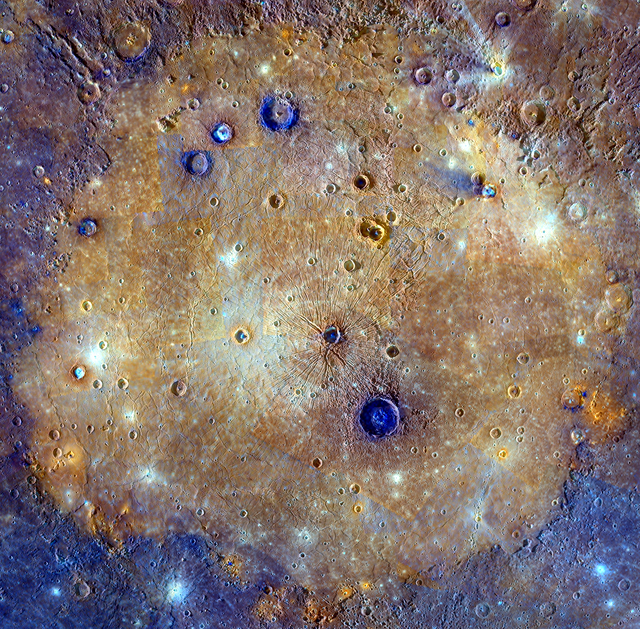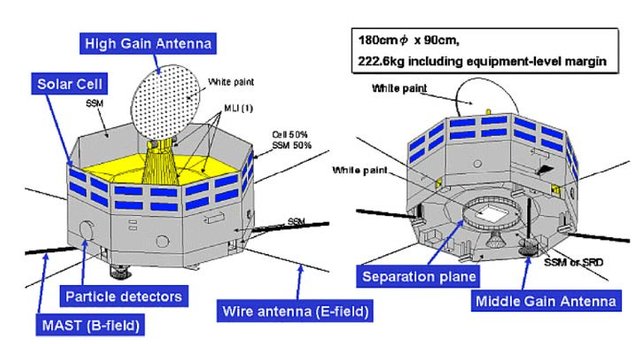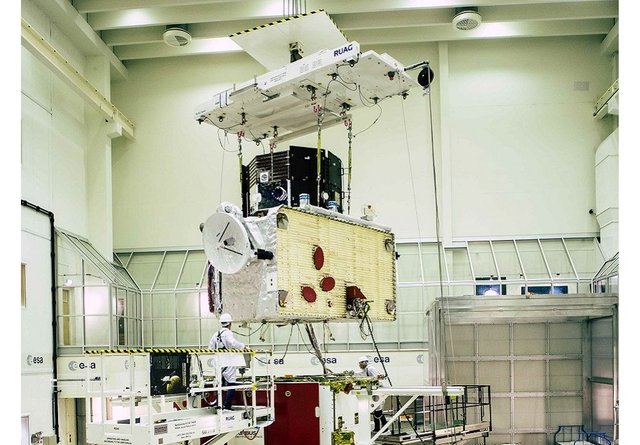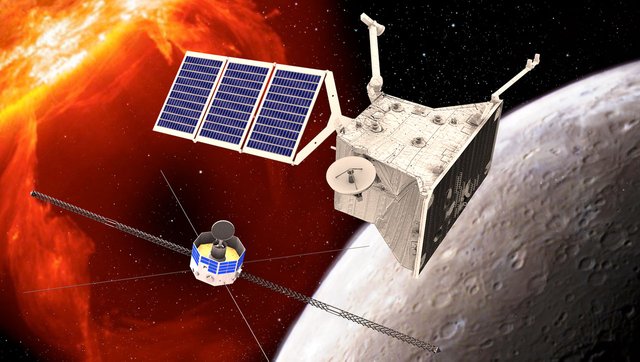BEPICOLOMBO : MISSION TO MERCURY BY EUROPEAN SPACE AGENCY & JAPANESE SPACE AGENCY
Hello Steemians, The last year has been a great experience for me. Seeing as 2017 has been another exciting year for the space scene, I thought it would be appropriate to bring today my new post on BEPICOLOMBO : MISSION TO MERCURY BY EUROPEAN SPACE AGENCY & JAPANESE SPACE AGENCY.
It is a revolutionary discovery which may take part in deciding future of the world and the entire humankind. Lets see what all BEPICOLOMBO : MISSION TO MERCURY BY EUROPEAN SPACE AGENCY & JAPANESE SPACE AGENCY is all about !!

BEPICOLOMBO, Europe's first Mission to Mercury. It's currently being put through its paces at ESA's European Space Research and Technology Centre in the Netherlands. In April the mechanical and vibration tests will be underway. These tests are crucial so that BEPICOLOMBO can withstand the launch and the seven-year journey ahead.
There's even more testing than usual. However because this joint European and Japanese Mission consists of not one but 2 Spacecraft. One Spacecraft is provided by ESA which is MPO : Mercury Planetary Orbiter and this Spacecraft has a focus more on the planet. They want to observe the planet through remote sensing characterize the surface, consecrate and crater wanting to know about the composition of the surface. The interior set planet and in addition they have a second Spacecraft and this Spacecraft is called the MERCURY MAGNETOSPHERE ORBITER more focused on the environment and this Spacecraft is provided by the Japanese Space Agency.

BEPICOLOMBO consists of several components in a so-called Spacecraft stack apart from the two Orbiters. There's also the Mercury Transfer Module which contains the Solar Electric Propulsion Engine to get them there and a Sun Shield for the MERCURY MAGNETOSPHERE ORBITER to stop the spinning Japanese Spacecraft from overheating.

Mercury is the closest planet to the Sun in our Solar System. Yet despite temperatures reaching around 450 Degrees Celsius. The NASA Messenger Mission found evidence for ice at the planets North Pole. Unlike Earth, Mercury barely tilts on its axis and so some areas are in permanent shade.

BEPICOLOMBO aims to follow up these findings to confirm how such a hot planet contains ice and also what type of ice. It will be the Messenger Mission found other surprises at the smallest planet in our Solar System. It discovered more Chemical Elements and Compounds with small Boiling Points known as Volatiles. But expected at the surface certain processes within the planets, environment are also much faster than they are on Earth. The NASA Mission ended in 2015 after spending four years orbiting Mercury. It focused predominantly on the North Pole whereas BEPICOLOMBO and its instruments can cover the whole planet as well as exploring its gravity field, the surface composition, internal structure and external magnetic field.

One of the special things about Mercury is that it's the only planet besides Earth has a Magnetic Dipole Field and so they would like to understand the Dipole around Mercury or how the Magnetic Field around Mercury is interacting with the Sun and that's very important for them because then they can learn for Ayres. How the Earth's Magnetic Field is interacting with the Sun and they have a lot of satellites around Earth which are affected by the Solar Wind and the interaction.
So, if they can get some clues about processes on Mercury. They want to learn for them in a few weeks. Solar Panels will arrive at ESA's Testing Facility and will be integrated onto the Spacecraft after correcting an electrical problem in the Mercury Transfer Module Power Processing Unit. BEPICOLOMBO's slightly delayed. Launch is now October 2018. It will arrive at Mercury in December 2025. Then this ESA Mission can examine the least explored terrestrial planet in our solar system, uncover how Mercury was formed and help us better understand the Earth itself.
Content Sources :
ESA : BEPICOLOMBO MISSION TO MERCURY
I hope you enjoyed learning about BEPICOLOMBO : MISSION TO MERCURY BY EUROPEAN SPACE AGENCY & JAPANESE SPACE AGENCY. If you love dreaming and learning science then please follow me, @adi-mac
If you are interested in various domains of Science and Mathematics then join the @steemstem project, team to support high quality STEM (Science,Technology, Engineering and Mathematics) related contents. Join them in steemit.chat to interact with the science authors from all over the world.

I thank @nitesh9 and @rocking-dave for the creation and rights to use the steemSTEM images and gifs presented throughout this post.
Thank you for reading my content !!
Don't Forget to Read My Previous Articles:
- NASA's DISCOVERY : Massive 75,000 Mile Wide Hole in The SUN
- Metallic M-Class Asteroid Worth 10,000 Quadrillion Dollars : NASA MISSION
- Alien Solar System With A Number Of Planets?? : NASA

stop asking for upvotes: "If you like the article then it is my humble request to you that kindly do Upvote my post so that it can be motivated for me in bringing latest articles like this in my coming post too."
If people like your post they will upvote it. If not, they won't.
ok sir. I will erase it! :)